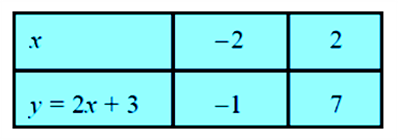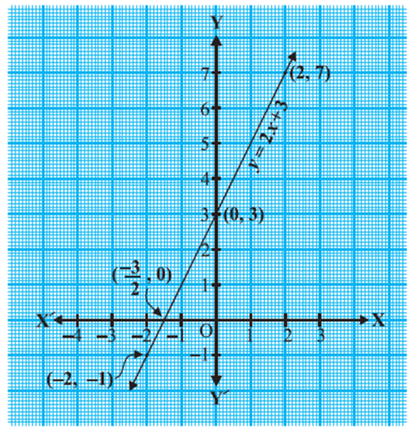The Polynomial p(x).
- Books Name
- Kaysons Academy Maths Foundation Book
- Publication
- Kaysons Publication
- Course
- JEE
- Subject
- Maths
Chapter -2
POLYNOMISALS
The Polynomial p(x)
For example, 4x + 2 is a polynomial in the variable x of degree 1, 2y2 – 2y + 4 is a polynomial in the variable y of degree
![]() is a polynomial in the variable x of degree 3 and
is a polynomial in the variable x of degree 3 and![]() is a polynomial in the variable u of degree 6. Expressions like
is a polynomial in the variable u of degree 6. Expressions like ![]() , are not polynomials.
, are not polynomials.
A polynomial of degree 1 is called a linear polynomial. For example, ![]() are all linear polynomials. Polynomials such as 2x + 5 – x2, x3 + 1, etc., are not linear polynomials.
are all linear polynomials. Polynomials such as 2x + 5 – x2, x3 + 1, etc., are not linear polynomials.
A polynomial of degree 2 is called a quadratic polynomial. The name ‘quadratic’ has been derived from the word ‘quadratie’ which means ‘square’.
![]() are some examples of quadratic polynomials (whose coefficient are real numbers). More generally, any quadratic polynomial in x is of the form ax2 + bx + c, where a, b, c are real numbers and
are some examples of quadratic polynomials (whose coefficient are real numbers). More generally, any quadratic polynomial in x is of the form ax2 + bx + c, where a, b, c are real numbers and ![]() In fact, the most general form of a cubic polynomial is ax3 + bx2 + cx + d.
In fact, the most general form of a cubic polynomial is ax3 + bx2 + cx + d.
Where, a, b, c, d are real numbers and
Now consider the polynomial p(x) = x2 – 3x – 4. Then, putting x = 2 in the polynomial, we get p(2) = 22 – 3 × 2 – 4 = – 6. The value ‘– 6’, obtained by replacing x by 2 in x2 – 3x – 4, is the value of x2 – 3x – 4 at x = 2. Similarly, p(0) is the value of p(x) at x = 0, which is – 4.
If p(x) is a polynomial in x, and if k is any real number, then the value obtained by replacing x by k in p(x), is called the value of p(x) at x = k, and is denoted by p(k). What is the value of p(x) = x2 –3x – 4 at x = –1? We have:
p(–1) = (–1)2 –{3 × (–1)} – 4 = 0
Also, note that p(4) = 42 – (3 × 4) – 4 = 0.
As p(–1) = 0 and p(4) = 0, –1 and 4 are called the zeroes of the quadratic polynomial x2 – 3x – 4. More generally, a real number k is said to be a zero of a polynomial p(x), if p(k) = 0.
You have already studied in Class IX, how to find the zeroes of a linear polynomial. For example, if k is a zero of p(x) = 2x + 3, then p(k) = 0 gives us 2k + 3 = 0, i.e.,
![]()
In general, if k is a zero of p(x) = ax + b, then p(k) = ak + b = 0, i.e., ![]()
So, the zero of the linear polynomial ax + b is ![]()
Thus, the zero of a linear polynomial is related to its coefficients. Does this happen in the case of other polynomials too? For example, are the zeroes of a quadratic polynomial also related to its coefficients?
In this chapter, we will try to answer these questions. We will also study the division algorithm for polynomials.
Geometrical Meaning of the Zeroes of a Polynomial
You know that a real number k is a zero of the polynomial p(x) if p(k) = 0. But why are the zeroes of a polynomial so important? To answer this, first we will see the geometrical representations of linear and quadratic polynomials and the geometrical meaning of their zeroes.
Consider first a linear polynomial ax + b, a ≠ 0. You have studied in Class IX that the graph of y = ax + b is a straight line. For example, the graph of y = 2x + 3 is a straight line passing through the points (– 2, –1) and (2, 7).

From Fig. 2.1, you can see that the graph of y = 2x + 3 intersects the x -axis mid-way between x = –1 and x = – 2, that is, at the point ![]()
You also know that the zero of 2x + 3 is ![]() Thus, the zero of the polynomial 2x + 3 is the x-coordinate of the point where the graph of y = 2x + 3 intersects the x-axis. In general, for a linear polynomial
Thus, the zero of the polynomial 2x + 3 is the x-coordinate of the point where the graph of y = 2x + 3 intersects the x-axis. In general, for a linear polynomial ![]() Therefore, the linear polynomial
Therefore, the linear polynomial

Relationship between Zeroes and Coefficients of a Polynomial
- Books Name
- Kaysons Academy Maths Foundation Book
- Publication
- Kaysons Publication
- Course
- JEE
- Subject
- Maths
Relationship between Zeroes and Coefficients of a Polynomial
You have already seen that zero of a linear polynomial ax + b is
![]() We will now try to answer the question raised in Section 2.1 regarding the relationship between zeroes and coefficients of a quadratic polynomial. For this, let us take a quadratic polynomial, say p(x) = 2x2 – 8x + 6. In Class IX, you have learnt how to factorise quadratic polynomials by splitting the middle term. So, here we need to split the middle term ‘– 8x’ as a sum of two terms, whose product is 6 × 2x2 = 12x2. So, we write
We will now try to answer the question raised in Section 2.1 regarding the relationship between zeroes and coefficients of a quadratic polynomial. For this, let us take a quadratic polynomial, say p(x) = 2x2 – 8x + 6. In Class IX, you have learnt how to factorise quadratic polynomials by splitting the middle term. So, here we need to split the middle term ‘– 8x’ as a sum of two terms, whose product is 6 × 2x2 = 12x2. So, we write
2x2 – 8x + 6 = 2x2 – 6x – 2x + 6 = 2x(x – 3) – 2(x – 3)
= (2x – 2)(x – 3) = 2(x – 1)(x – 3)
So, the value of p(x) = 2x2 – 8x + 6 is zero when x – 1 = 0 or x – 3 = 0, i.e., when x = 1 or x = 3. So, the zeroes of 2x2 – 8x + 6 are 1 and 3. Observe that:
![]()
![]()
Let us take one more quadratic polynomial, say, p(x) = 3x2 + 5x – 2. By the method of splitting the middle term,
![]()
![]()
Hence, the value of 3x2 + 5x – 2 is zero when either 3x – 1 = 0 or x + 2 = 0, i.e.,
![]() Observe that:
Observe that:
![]()
![]()
In general, if α* and β* are the zeroes of the quadratic polynomial p(x) = ax2 + bx + c,
![]() are the factors of p(x). Therefore,
are the factors of p(x). Therefore,
![]() where k is a constant
where k is a constant
![]()
![]()
Comparing the coefficients of x2, x and constant terms on both the sides, we get
![]()
![]()
![]()
Division algorithm for Polynomials
You know that a cubic polynomial has at most three zeroes. However, if you are given only one zero, can you find the other two? For this, let us consider the cubic polynomial
![]() If we tell you that one of its zeroes is 1, then you know that x – 1 is a factor of x3 – 3x2 – x + 3. So, you can divide x3 – 3x2 – x + 3 by x – 1, as you have learnt in Class IX, to get quotient x2 – 2x – 3.
If we tell you that one of its zeroes is 1, then you know that x – 1 is a factor of x3 – 3x2 – x + 3. So, you can divide x3 – 3x2 – x + 3 by x – 1, as you have learnt in Class IX, to get quotient x2 – 2x – 3.
Next, you could get the factors of x2 – 2x – 3, by splitting the middle term, as (x + 1) (x – 3). This word give you
![]()
![]()
So, all the three zeroes of the cubic polynomial are now known to you as 1, – 1, 3.
Let us discuss the method of dividing one polynomial by another in some detail.
Before noting the steps formally.
![]() then we can find polynomials q(x) and r(x) such that
then we can find polynomials q(x) and r(x) such that
![]()
Where r(x) = 0 or degree of r (x) < degree of g(x).

 Kaysons Publication
Kaysons Publication
